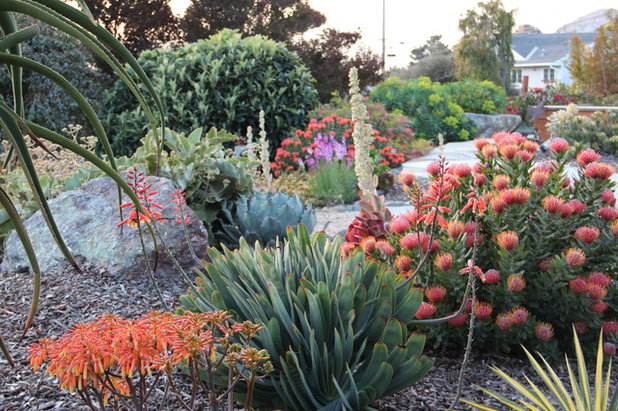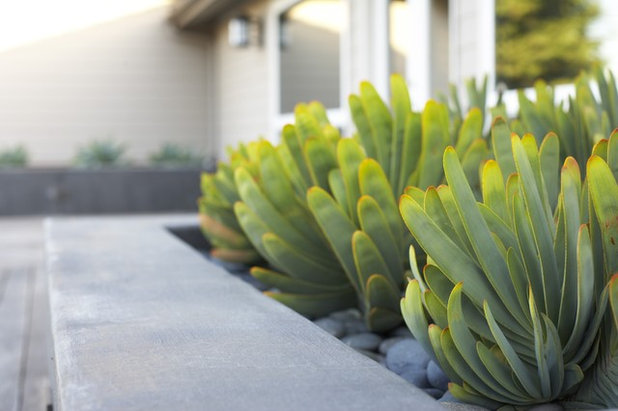A landscape of succulents tops my list of favorites, but sometimes a little variation from the tight rosettes that define their silhouette is necessary for a dynamic and interesting gardenscape.
Enter fan aloe
(Aloe plicatilis). Its structural yet fluid fanning foliage is the succulent landscape's response to an ornamental grass. In its native climate of South Africa, massive treelike fan aloes dot the landscape. In cultivation, consider fan aloe an elegantly tidy, living landscape sculpture shaking up the succulent field.

The Garden Route Company
Botanical name: Aloe plicatilisCommon name: Fan aloe
USDA zones: 9 or 10 to 11; hardy to about 23 degrees Fahrenheit (find your zone)
Water requirement: Low; looks best with occasional watering
Light requirement: Sun to light shade (intense summer sun burns the leaf tips)
Mature size: Very slow growing; reaches 3 to 5 feet tall in 10 years (wild specimens noted up to 15 feet tall)
Benefits and tolerances: Flowers attract hummingbirds; drought and coastal tolerant
Seasonal interest: Evergreen; flowers late winter to early spring
When to plant: Can be grown from seed; propagates through branchlet cuttings in spring. (Allow the cuttings to dry out for one week before planting.)
Distinguishing traits. Atop a woody trunk (or forked trunk), radiating fans of foot-long gray-green rounded leaves arch upward. While its fleshy leaves are what attract me most, fan aloe also offers 1 1/2-foot-long leafless inflorescence topped with bright scarlet flowers each spring. The flowers tie in surrounding warmer colors and provide nectar to hummingbirds.

Gardens by Gabriel, Inc.
How to use it. Sensitive to frost, fan aloe commonly grows in pots or containers, making maintenance a breeze once temperatures drop. And since the plant propagates so seamlessly through cuttings, well-packaged, thoughtful housewarming gifts abound; just add a unique vessel.
In climates that don’t have freezing temperatures, add fan aloe to a sandy, barren and freely draining site. It's native to the coastal cliffs of South Africa, so you can add fan aloe to your list of plants that thrive where others fail.
Its clean texture and cool gray-green color soothe surrounding landscape colors, allowing vivid plants to advance into focus. Its long-leafed foliage diversifies the silhouette of a succulent garden while still providing a minimalist, sculptural effect.
Shown: Aloe plicatilis with
Leucospermum and
Echeveria

Jeffrey Gordon Smith Landscape Architecture
Planting notes. Fan aloe is a resilient, drought-tolerant succulent, but it looks its best when sheltered from harsh sun and provided with supplemental watering.
Tip: Watch for blackening tips; this may be a sign that your plant is being scorched. Freezing or scorching temperatures may send the plant into dormancy. If its leaves are looking especially plump, you're watering correctly. Its leaves will shrivel, and may even drop, if it's not receiving ample water. Simply adjust your care plan (without overwatering), and the plant should sprout back to life
While fan aloe may be a little more sensitive than other succulents, low maintenance and beauty still top its list of attributes. To keep it looking its best, provide consistent sunlight. Garden cleanup involves only cutting out spent flowers; the leaves drop on their own, revealing the attractive, smooth gray trunk.
More: Browse more succulents in the Gardening section





